This month, I took part in NParks’ Butterfly Watch Citizen Science programme. This was my first foray into hands-on conservation and biodiversity work, and my first time volunteering in a couple of years.
The Butterfly Watch is one of a few Citizen Science programmes by NParks. In these programmes, different groups of animals are selected for biodiversity and conservation research. These animals include herons, dragonflies, garden birds, and butterflies.
The basic idea of these Citizen Science programmes is to have members of the public carry out on-site surveys, and spot, identify, and count the different species of each group of animals. With these Citizen Science data, researchers in NParks can monitor the population of these animals, and the health of their ecology in Singapore.
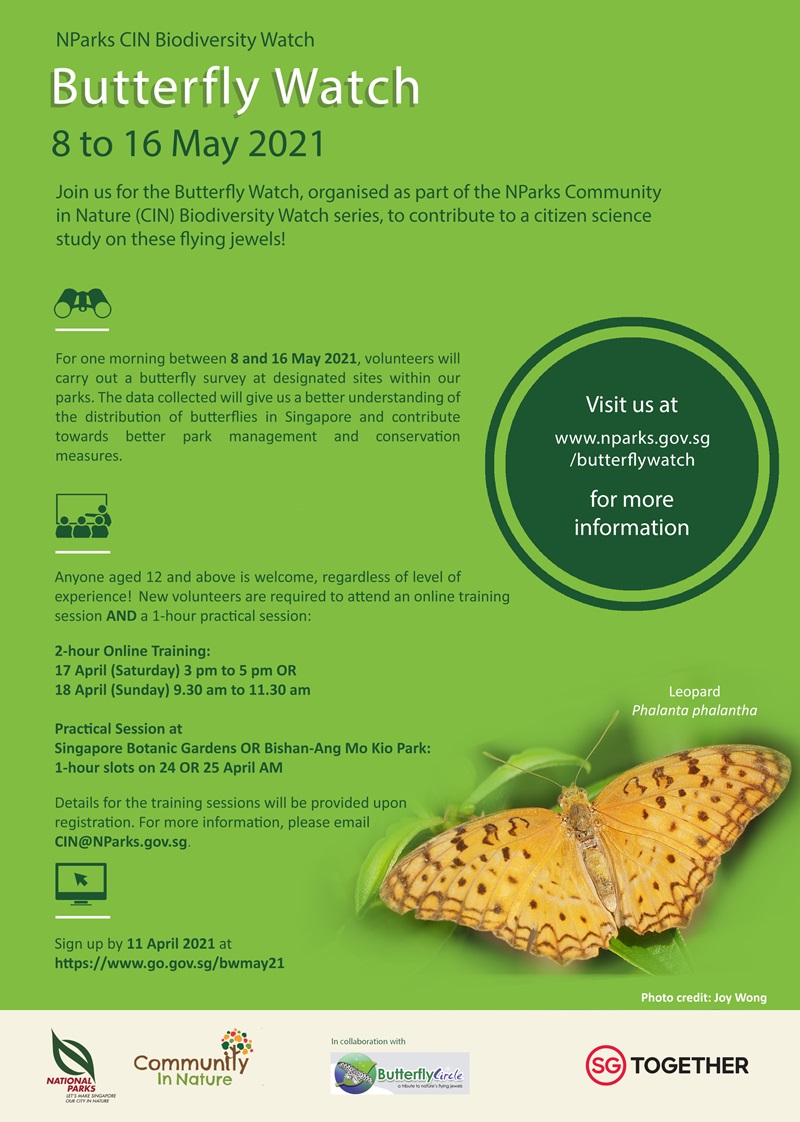
Butterfly Watch poster by NParks
I signed up via a webform on the NParks website, and followed through the three parts of the programme:
- A 2-hour online training on 17th/18th April
- A 1-hour practical session on 24th/25th April
- The actual survey, conducted at our assigned locations, any time between 8th to 16th May.
17th/18th April - Online training
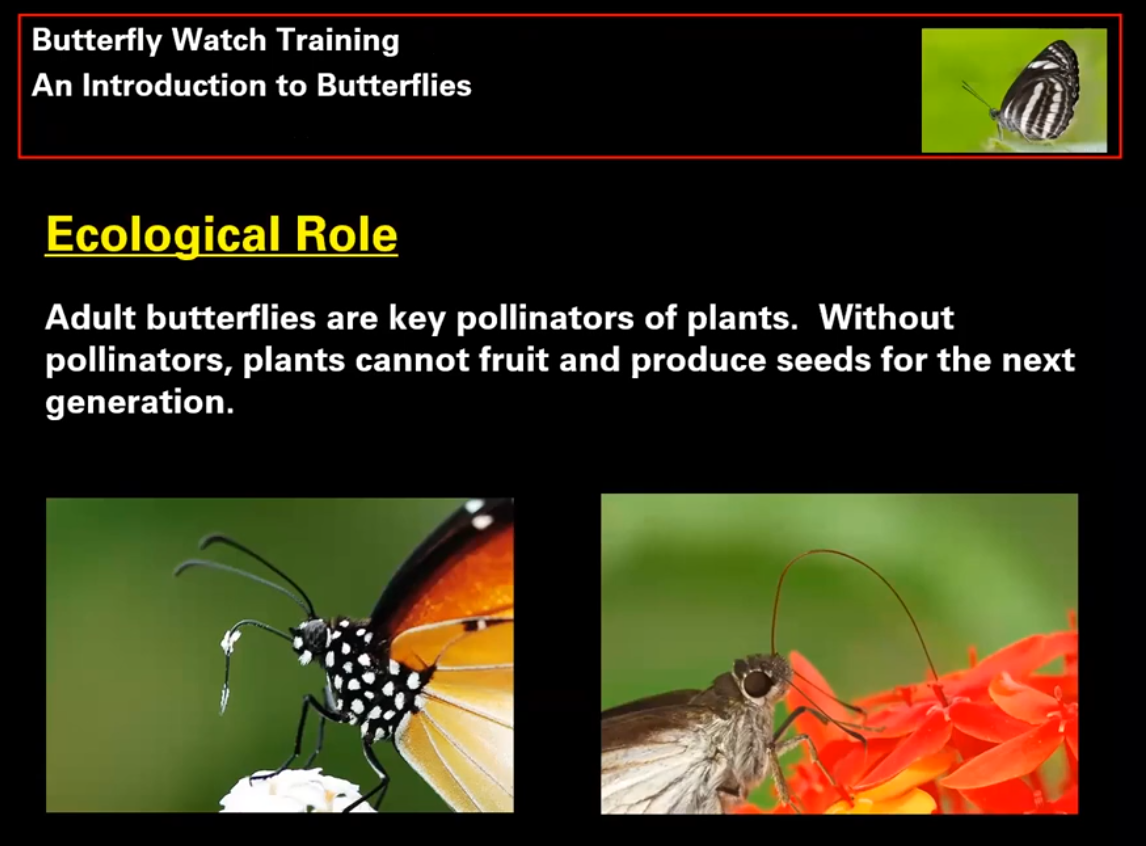
Butterflies 101
The online training was held over Zoom, where an instructor from NParks introduce to volunteers the basics of butterflies, and how to identify them. The basics, such as butterfly anatomy, lifecycle and behavior, are easy to understand. But identification is a lot more difficult for the beginner. Volunteers were introduced to 23 different butterflies, and their distinct features. Even though it was difficult to grasp at first, fast forward to today and I can confidently identify 12 to 15 of them, without the help of a guidebook. So it’s not that difficult after a while.

Learning to identify different species of butterflies
During the online training, volunteers were also taught how to conduct the survey, using a method know as the Pollard Walk. In the actual survey, volunteers would be assigned 2 to 3 transects - a transect is nothing but a 200 meters route, to be completed in 20 minutes, using the Pollard Walk.
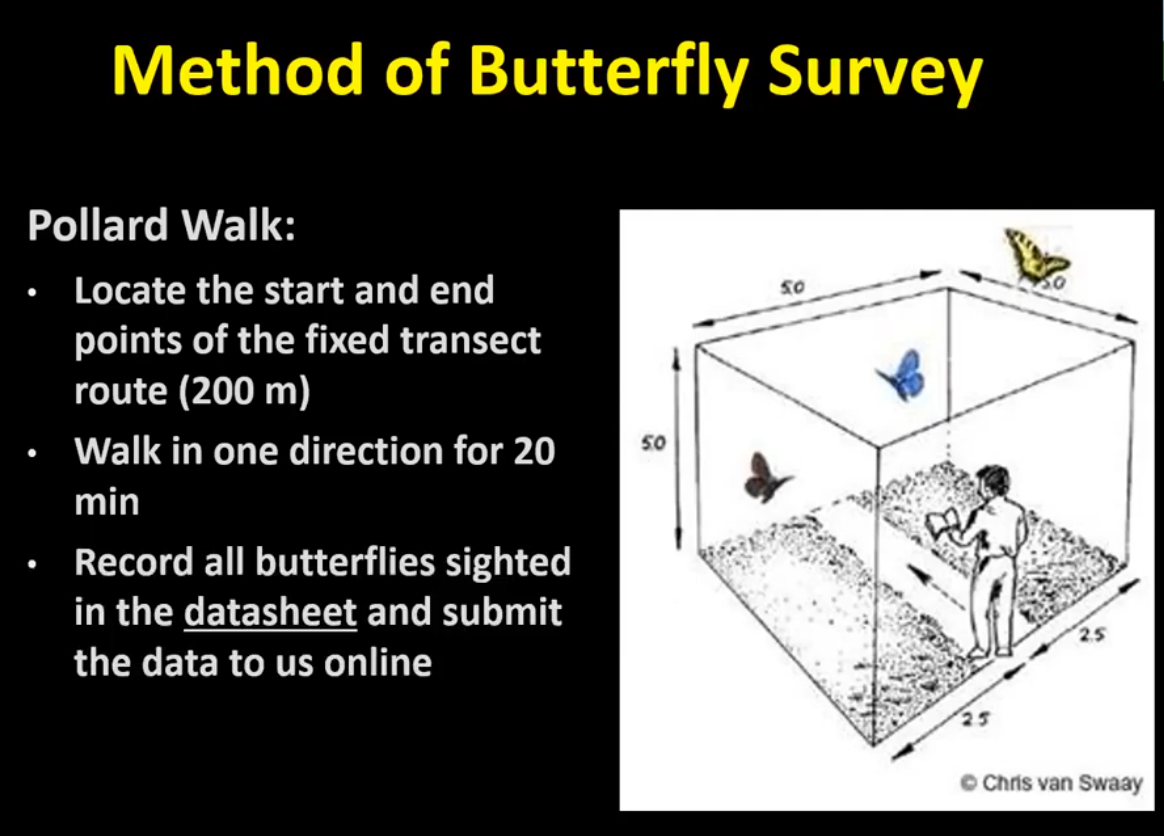
The Pollard Walk
24th/25th April - Practical session
One week after the online training, volunteers attended a practical session, guided by a NParks instructor on how exactly the transects and Pollard Walks will be carried out. The practical sessions were held either at the Singapore Botanic Gardens or the Bishan-Ang Mo Kio Park. The objective is to give volunteers a sense of the actual survey. For example, we realized that walking 200 meters in 20 minutes is a very slow pace, and we noted not to double count butterflies as they flutter back and forth along our transect. And though a camera is not necessary for butterfly watching, it will certainly improve the experience. We were also taught how to record our sightings on a datasheet, and to be conservative - it’s better to record a butterfly as unidentified, than to hazard a guess.

My first attempt at shooting butterflies. This is a Grey Pansy at the Singapore Botanic Gardens
8th to 16th May - Actual survey
Volunteers then proceed to conduct the actual survey, any day between 8th and 16th May. As butterflies are diurnal animals and rely on the sun’s warmth to be active, the surveys have to be conducted between 9.30am and 3.00pm - this is when butterflies are the most active.
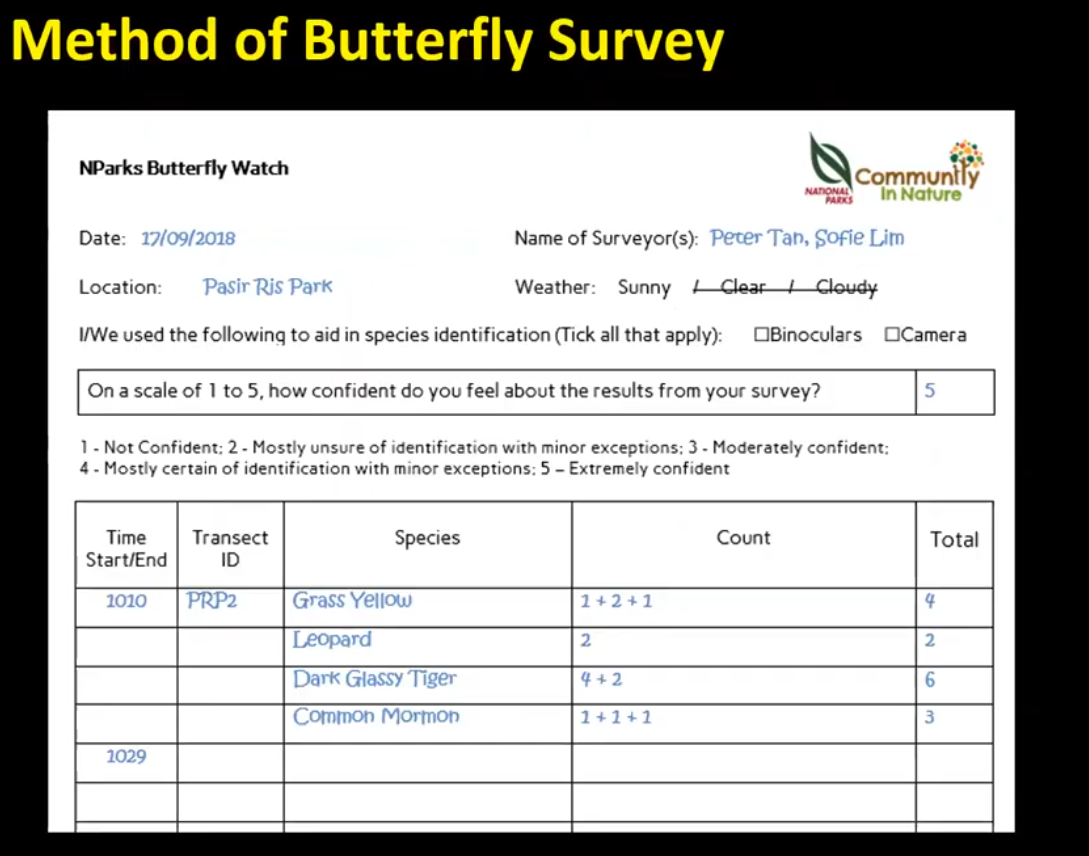
An example datasheet to record butterfly sightings
Once transects are completed, volunteers then submit recorded datapoints into a webform, together with any pictures that have been taken.
My experience
I chose to conduct my survey on the 13th May morning, as it was Hari Raya Puasa and a public holiday in Singapore. My assigned location is the Woodlands Waterfront Park, and I have been assigned with 2 transects. I have never been to the park before, so I was quite excited to visit and conduct the survey. Getting there was interesting too, as the nearest MRT station was the new Woodlands North station on the Thomson-East Coast Line, which I have never been on - yet another first.

The Woodlands Waterfront Park
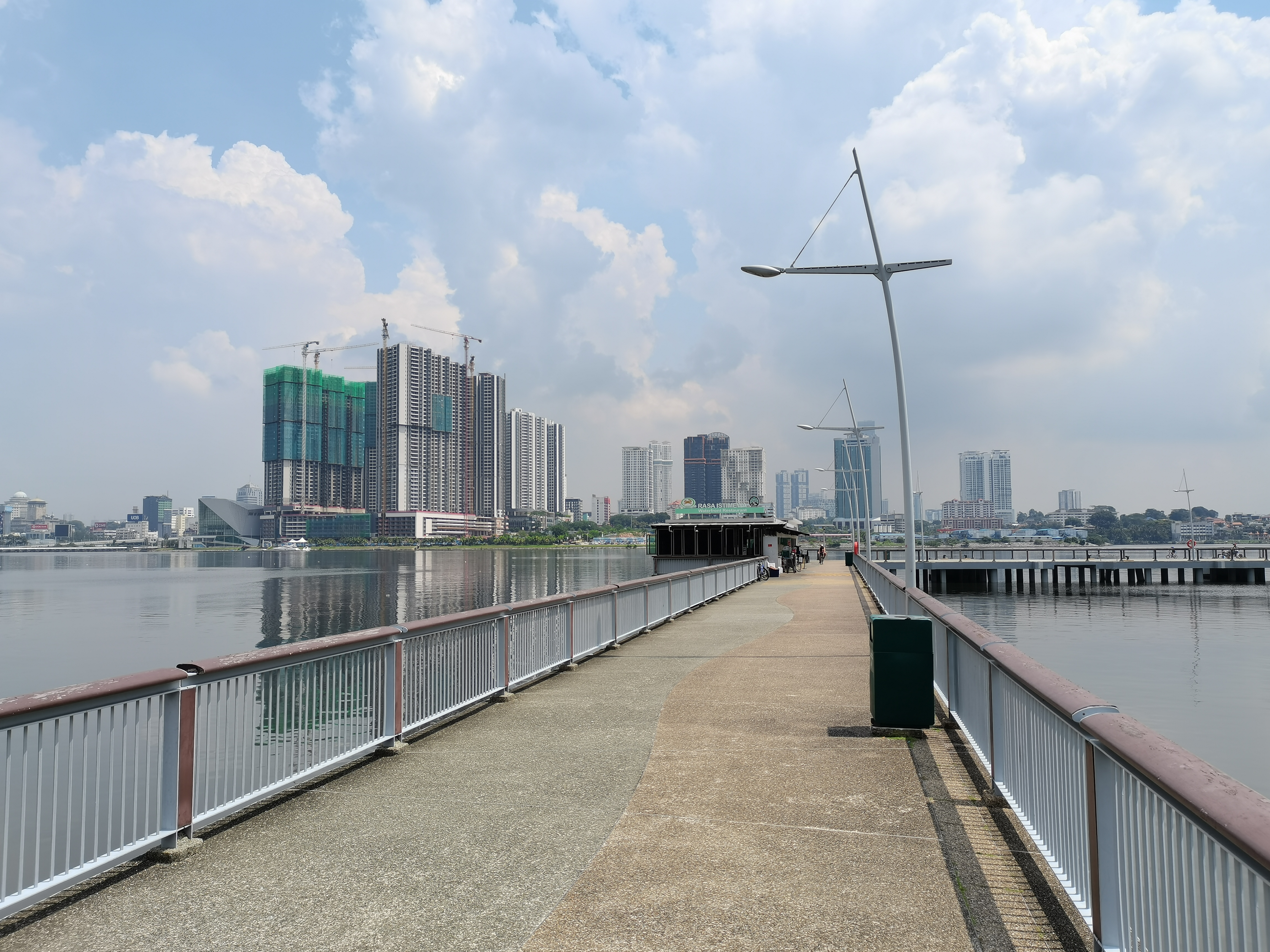
Front and centre from the park: Johor Bahru
The first transect
Once there, I quickly located the starting point of my first transect, and began the survey. To be honest, I wasn’t feeling confident that I will identify butterflies along the way and collect good data. Luckily, this was less difficult than I had imagined, The moment I began my survey, I chanced upon a Chocolate Pansy lurking in the grass, marking my first sighting for my assignment.

First catch of the day: a Chocolate Pansy
The first transect wasn’t particularly interesting, as there weren’t many pollinator-attracting plants along this transect. In all, I spotted a total of 20 butterflies:
- 1 Chocolate Pansy,
- 5 Grass Blue,
- 1 Mottled Emigrant,
- 1 Common Mormon,
- 5 Grass Yellows, and
- 7 unidentified butterflies.
The second transect
Encouraged by my first transect, I went on to locate the starting point of my second transect. And this transect was certainly more interesting than the first - there were plenty of pollinator-attracting plants along this transect, including candle bushes, golden dewdrops, and red tree shrubs.
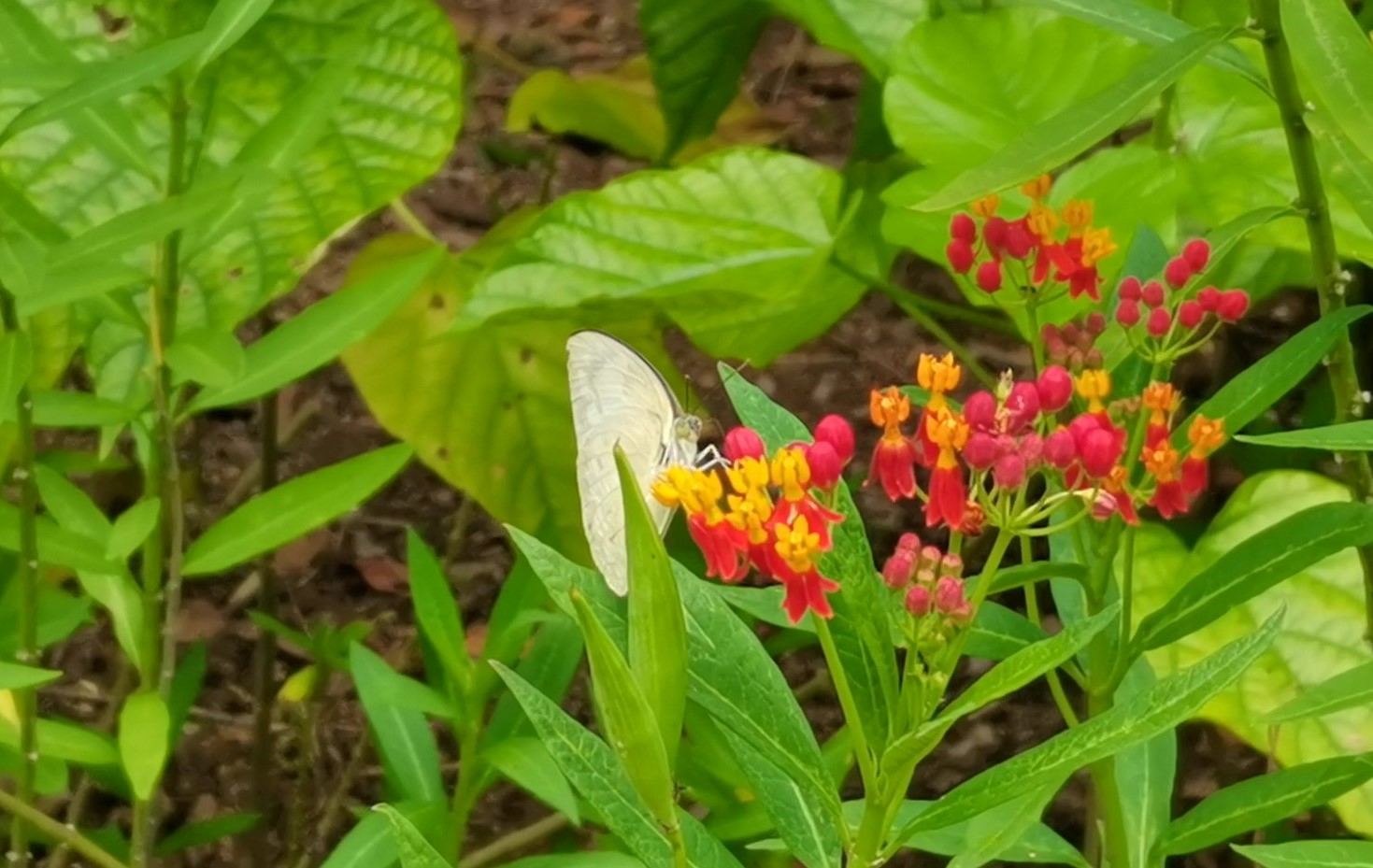
A butterfly I couldn’t really identify. Might have been a Mottled Emigrant.
In all, this transect was a more fruitful one, and I spotted a total of 48 butterflies:
- 6 Plain Tigers,
- 3 Mottled Emigrants,
- 4 Lemon Emigrants,
- 15 Grass Yellows,
- 7 Grass Blues, and
- 13 unidentified butterflies.
I am satisfied with the data that I collected, and took a couple of videos and pictures of butterflies in the transect. But I had one more thing to do. Because of how the butterflies were fluttering around, there really wasn’t enough time to properly record them in my notebook. So far, I only managed to make scribbles like this:
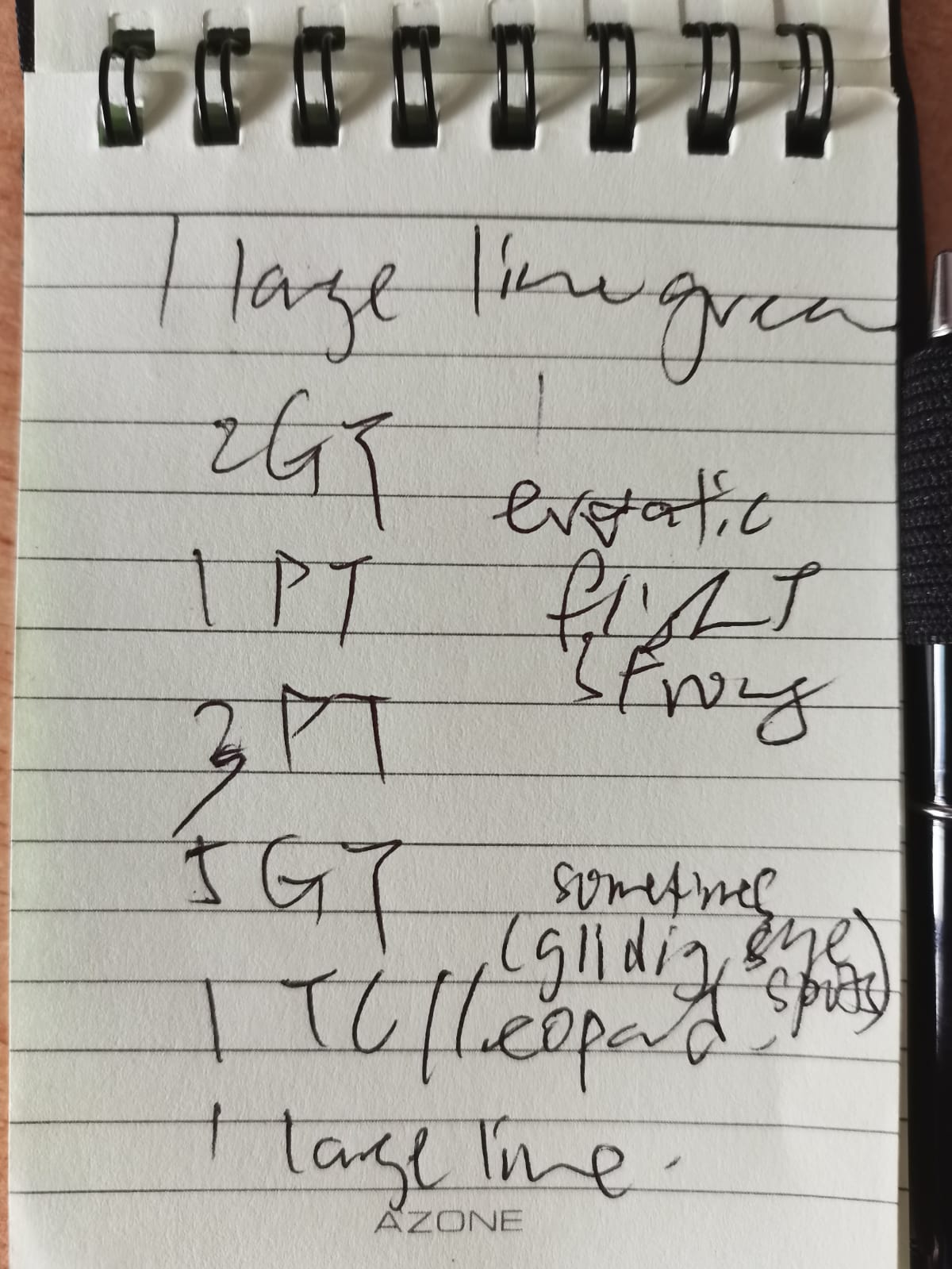
Handwriting that will quickly become illegible if I don’t act fast
I needed to quickly transcribe these scribbles into legible notes while my memory was still fresh. So I went to the Rasa Istimewa Waterfront Restaurant - a cool restaurant out along the jetty, for lunch and the transcription.
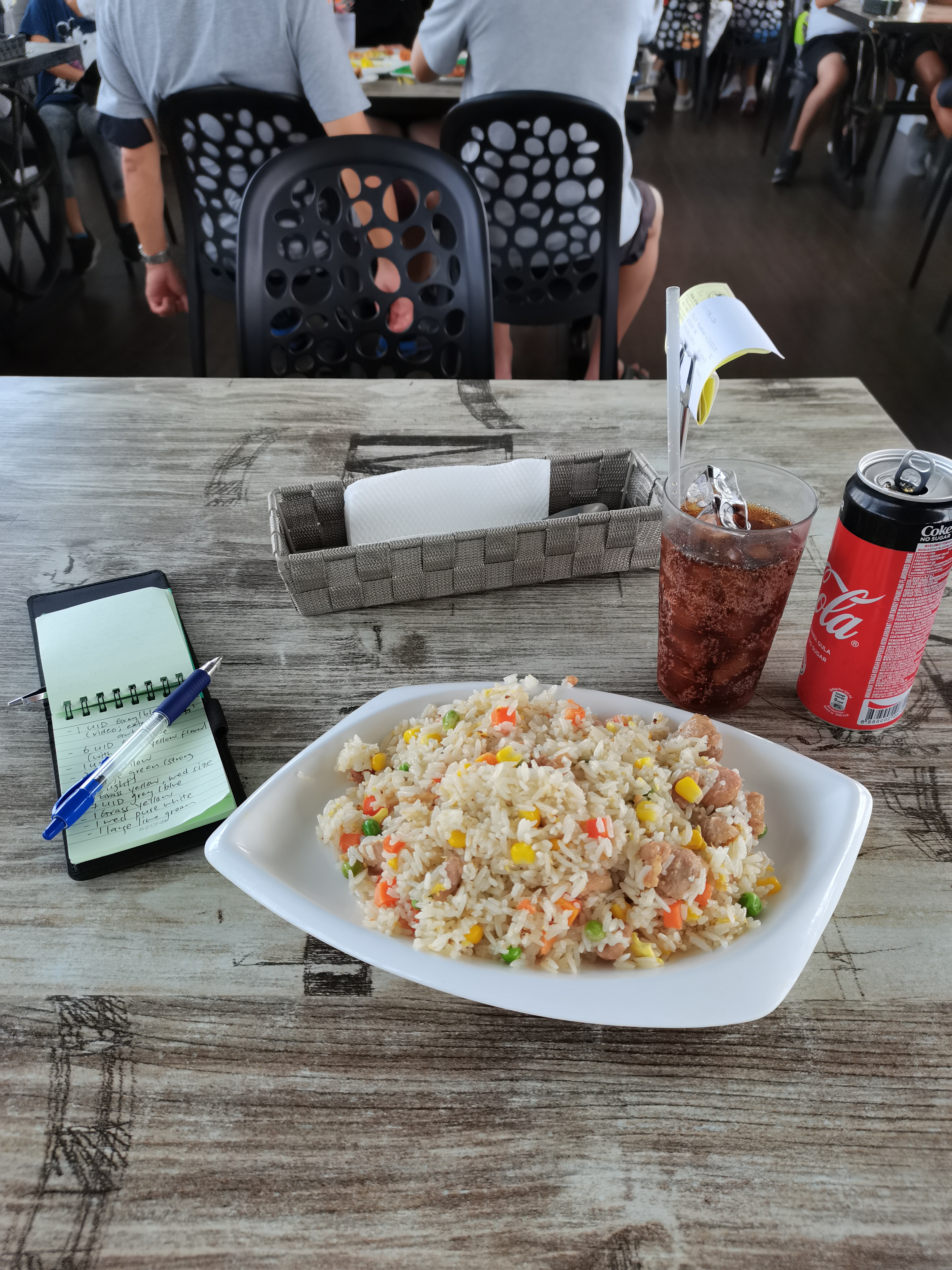
What’s better for a hot and hungry midday than a Coke Zero and a plate of chicken fried rice?
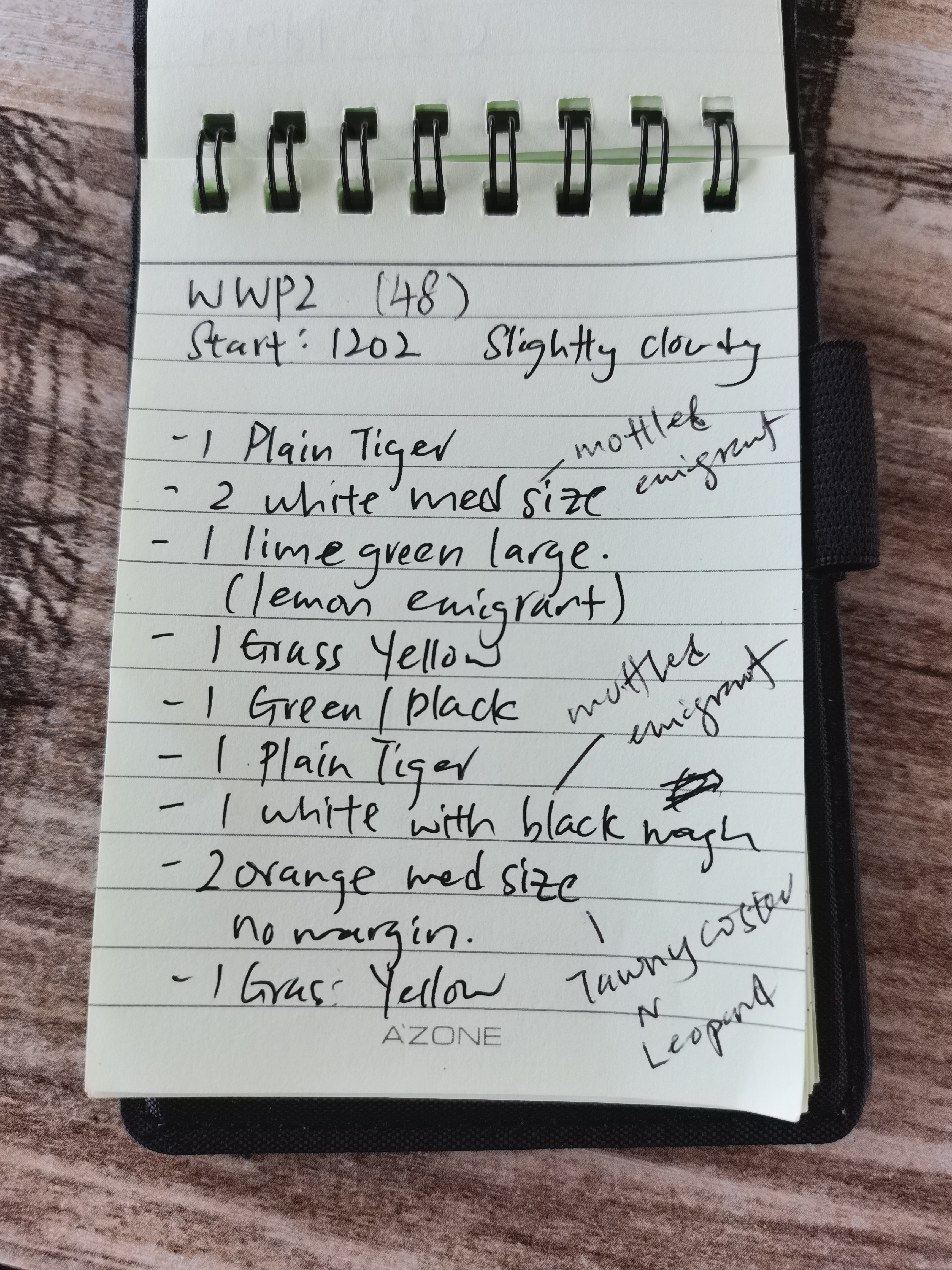
My notes looks almost scientific
After a good lunch and clean, legible notes, I went home to sort out the data and digital files, and submitted my results.
My takeaways
- I will most likely make an effort to participate in the other Citizen Science programmes, now that I have done it once and thoroughly enjoyed myself. The NParks staff were systematic in the logistics of the programme and the management of volunteers. The whole programme was well-executed - kudos to the team.
- I will most likely invest in a proper camera as well. All the images and videos that I took was using a smartphone, which is quite difficult to operate out in the field, with a notebook and pen on hand. And as you can see, the quality of my images are bad.
- This first foray in biodiversity and conservation work has given me the experience that I always wanted to have, to see if I would indeed want to work in wildlife and conservation biology in the future. While I enjoyed the science of this exercise, I also enjoyed the outdoors and field element of it. It’s a great feeling to be away from the desk and the computer, and to be near nature and beautiful creatures, like these butterflies.